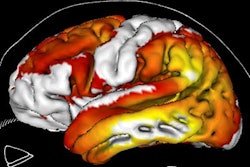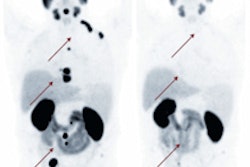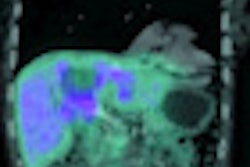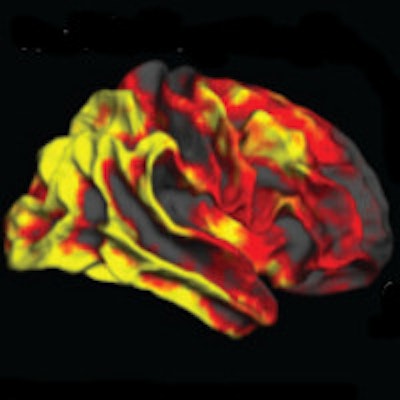
SAN DIEGO - German researchers have received this year's Image of the Year award from the Society of Nuclear Medicine and Molecular Imaging (SNMMI) for the use of three different radiotracers with PET to measure amyloid plaques, tau tangles, and metabolic activity in the brains of living Alzheimer's patients.
The multimodal study used PET along with the novel radiotracer F-18 AV-1451 (F-18 T807) to measure tau protein deposits, carbon-11-labeled Pittsburgh Compound B (C-11 PiB) to measure amyloid plaques, and FDG to measure regional neurodegeneration. The combination offers new insight into the neurodegenerative characteristics of Alzheimer's disease and shows how tau pathology may be an instrumental target for disease-modifying strategies, according to a statement from SNMMI.
Increased tau pathology and the accumulation of amyloid plaque both have been linked to the onset of dementia, Alzheimer's, cognitive deficiencies, and neurodegeneration.
"The study represents the result of an interdisciplinary effort, involving several clinical departments and scientists from different research centers," said study co-author Dr. Alexander Drzezga, from the University Hospital of Cologne, in the statement. The Image of the Year award "will encourage particularly the young investigators involved in this project to continue with this type of research in the future."
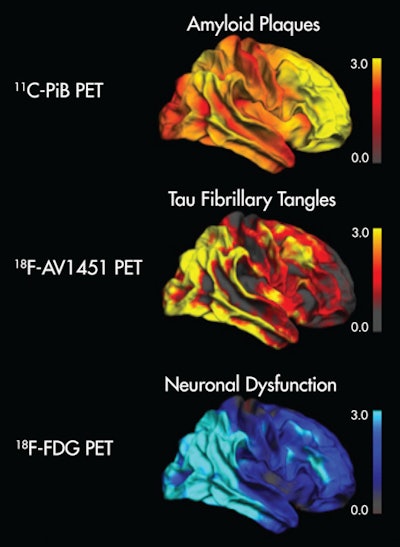 Image shows the topographical correspondence of tau but not amyloid pathology with neuronal dysfunction in Alzheimer's disease. The right lateral surface of projected z-score images reflects deviation from healthy controls. Yellow/red indicate higher uptake, while blue denotes lower uptake compared to controls. Image courtesy of Bischof et al and SNMMI.
Image shows the topographical correspondence of tau but not amyloid pathology with neuronal dysfunction in Alzheimer's disease. The right lateral surface of projected z-score images reflects deviation from healthy controls. Yellow/red indicate higher uptake, while blue denotes lower uptake compared to controls. Image courtesy of Bischof et al and SNMMI.The study was performed in cooperation with the Jülich Research Center and the German Center for Neurodegenerative Diseases.
This year's SNMMI Image of the Year was chosen from more than 2,200 abstracts submitted for the annual meeting and voted on by reviewers and the society leadership.
In announcing the award, Dr. Satoshi Minoshima, PhD, chair of the SNMMI Scientific Program Committee, said researchers "still do not understand fully how these abnormal amyloid and tau protein depositions affect brain functions and cause dementia. This Image of the Year study begins to address that fundamental question and leads to the next investigational study to determine the relative contributions of tau and amyloid pathology to neuronal dysfunction."




